#5g Core Architecture
Explore tagged Tumblr posts
Text
5G Core Architecture Explained: What You Need to Know
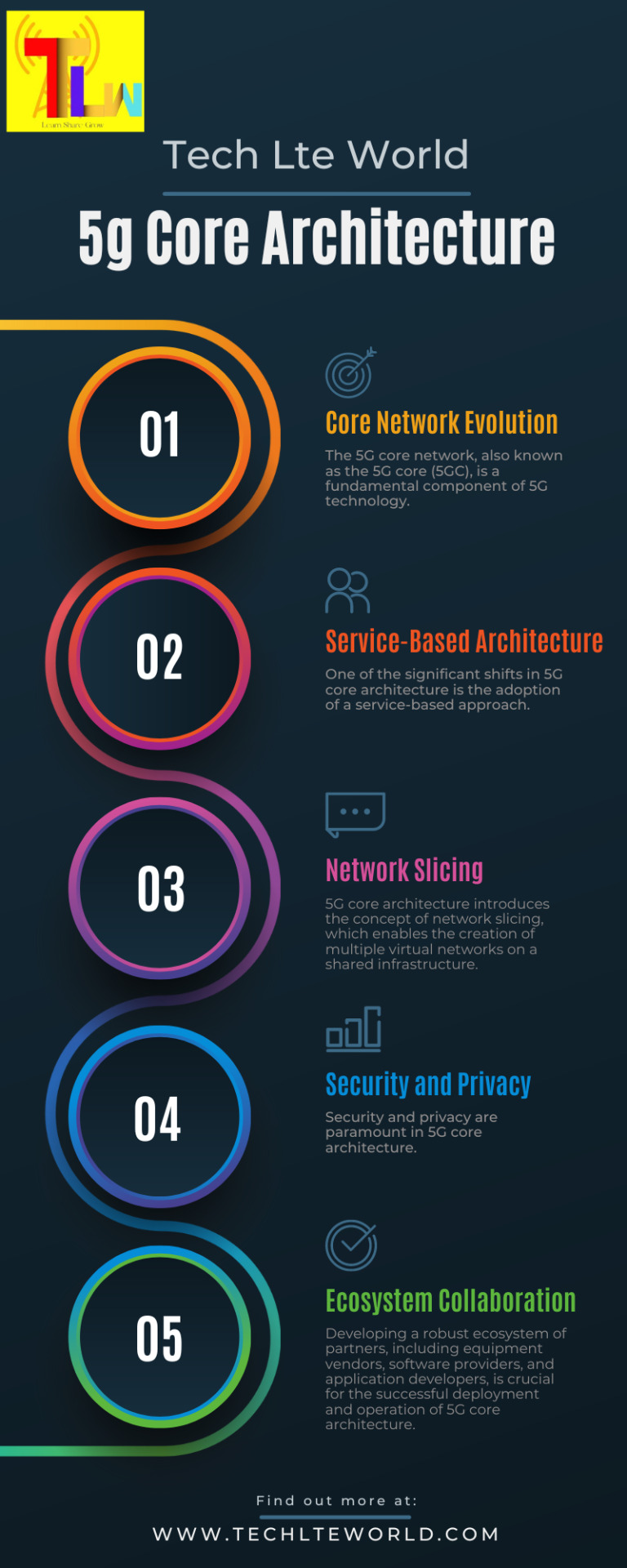
Curious about 5G core architecture? Dive into our easy-to-understand guide! Learn about the main parts and how they work together to power super-fast 5G networks. Stay ahead in the world of technology with our simple explanations.
0 notes
Text
Motorola Edge 50 Neo Processor: Everything You Need to Know
Motorola has been making waves in the smartphone market with its Edge series, offering premium features at competitive prices. The Motorola Edge 50 Neo is no exception, delivering a stylish design, impressive display, and a capable processor that ensures smooth performance. But what exactly powers this device? Let’s take a closer look at the processor inside the Motorola Edge 50 Neo and what it brings to the table.
Which Processor Does the Motorola Edge 50 Neo Use?
The Motorola Edge 50 Neo is equipped with the MediaTek Dimensity 7030 processor. This is a mid-range chipset designed for efficient performance and power management, making it a great choice for users who want a balance between speed, battery life, and affordability.
MediaTek Dimensity 7030: Key Features and Performance
The MediaTek Dimensity 7030 is built on a 6nm process, ensuring better power efficiency and thermal management. Here’s what it offers:
1. Octa-Core CPU for Smooth Performance
The chipset features an octa-core CPU with two ARM Cortex-A78 cores clocked at up to 2.5GHz and six Cortex-A55 cores for efficiency.
This setup ensures smooth multitasking, allowing users to switch between apps seamlessly.
2. Mali-G610 GPU for Gaming
The Mali-G610 MC3 GPU enhances graphics performance, making the device suitable for gaming and media consumption.
Games like Call of Duty Mobile and PUBG should run smoothly at moderate settings.
3. 5G Connectivity for Faster Data Speeds
The Dimensity 7030 supports 5G connectivity, ensuring faster internet speeds and lower latency for streaming and online gaming.
It also supports Wi-Fi 6 and Bluetooth 5.2 for seamless wireless connectivity.
4. AI Enhancements and Camera Processing
The chipset includes MediaTek’s AI Processing Unit (APU), improving camera performance, image processing, and battery optimization.
With support for HDR video, AI-powered photography, and night mode enhancements, the Motorola Edge 50 Neo offers a great photography experience.
5. Power Efficiency for Better Battery Life
The 6nm architecture ensures better power management, helping the device last longer on a single charge.
Combined with the Edge 50 Neo’s 5000mAh battery and 68W fast charging, users can expect all-day usage with minimal downtime.
How Does the Motorola Edge 50 Neo Perform in Real Life?
With the MediaTek Dimensity 7030, the Motorola Edge 50 Neo delivers a smooth experience in day-to-day tasks like browsing, social media, and video streaming. Gamers can enjoy stable frame rates on popular titles, while multitasking remains fluid. The addition of 5G connectivity ensures users stay future-proofed for high-speed internet.
Upgrade to the Motorola Edge 50 Neo – Sell Your Old Phone on CashyGo.in!
If you're planning to upgrade to the Motorola Edge 50 Neo, you can sell your old smartphone for instant cash at CashyGo.in. This platform offers an easy and hassle-free way to trade in your old device and get the best price. Don't let your old phone sit unused—convert it into cash and upgrade to a new smartphone today!
Conclusion
The Motorola Edge 50 Neo, powered by the MediaTek Dimensity 7030, is a solid mid-range smartphone that balances performance, battery life, and 5G connectivity. Whether you’re a casual user, a mobile gamer, or someone who loves photography, this device offers a well-rounded experience at an affordable price.
Would you consider buying the Motorola Edge 50 Neo?Share your thoughts with us—leave a comment below!
2 notes
·
View notes
Text
SeeZol: Technological innovation of wheel loader intelligent weighing system
The SeeZol wheel loader intelligent weighing system has achieved a breakthrough upgrade in the field of measurement through the integration of 5G+AI technology. The core of the system adopts a multi-source heterogeneous data processing architecture. On the basis of the original dual sensors (oil pressure/position), it integrates a 5G communication module (supports NSA/SA dual-mode, uplink rate ≥200Mbps), which can transmit operation data to the cloud management platform in real time. The AI algorithm layer deploys convolutional neural networks (CNN) and long short-term memory networks (LSTM). The dynamic compensation model established through 20,000 sets of working condition data training improves the weighing accuracy to ±0.7%, which is 40% lower than the traditional system error.
The system innovatively develops a three-dimensional perception compensation algorithm: using 5G edge computing nodes to analyze the bucket motion trajectory in real time (sampling frequency 500Hz), combined with the hydraulic oil temperature-viscosity relationship AI prediction model, automatically compensates for the measurement deviation caused by thermal deformation. The 5G module supports remote OTA upgrades, and the newly trained weight recognition model can be sent down through the cloud (model update delay <200ms). The industrial-grade AI coprocessor (computing power 4TOPS) realizes self-optimization of the loading process. According to measured data, the lifting speed can be dynamically adjusted to reduce energy consumption by 12%, while ensuring a stable measurement accuracy of ±1.5%.
The intelligent breakthrough of this system is reflected in the construction of autonomous decision-making capabilities. The AI engine predictably maintains hydraulic components and automatically calibrates the sensor zero point by analyzing historical operation data (storage capacity expanded to 5,000 groups). At present, deep coupling with the smart construction site system has been achieved, and weighing data can be synchronously transmitted to the dispatching center through the 5G private network, supporting loading efficiency digital twin modeling. The technical system has passed the German PTB certification and is expanding the application of autonomous driving loading scenarios.
1 note
·
View note
Text
Edge Computing Market Disruption: 7 Startups to Watch
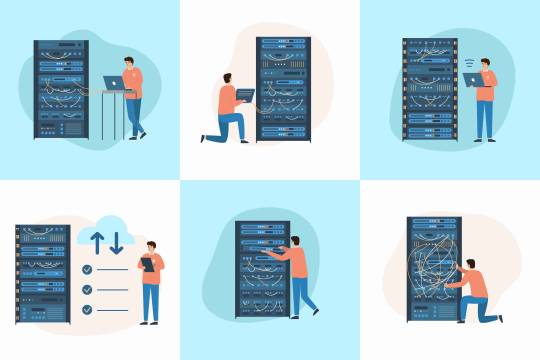
Edge Computing Market Valuation and Projections
The global edge computing market is undergoing a transformative evolution, with projections estimating an edge computing market size escalation from USD 15.96 billion in 2023 to approximately USD 216.76 billion by 2031, marking a compound annual growth rate (CAGR) of 33.6%. This unprecedented trajectory is being driven by rising demand for real-time data processing, the proliferation of Internet of Things (IoT) devices, and the deployment of 5G infrastructure worldwide.
Request Sample Report PDF (including TOC, Graphs & Tables): https://www.statsandresearch.com/request-sample/40540-global-edge-computing-market
Accelerated Demand for Real-Time Data Processing
Edge computing is revolutionizing the digital ecosystem by decentralizing data processing, shifting it from core data centers to the edge of the network—closer to the point of data generation. This architectural transformation is enabling instantaneous insights, reduced latency, and optimized bandwidth usage, which are critical in sectors requiring rapid decision-making.
Industries such as automotive, healthcare, telecommunications, and manufacturing are leading adopters of edge technologies to empower smart operations, autonomous functionality, and predictive systems.
Get up to 30%-40% Discount: https://www.statsandresearch.com/check-discount/40540-global-edge-computing-market
Edge Computing Market Segmentation Analysis:
By Component
Hardware
Edge computing hardware includes edge nodes, routers, micro data centers, servers, and networking gear. These devices are designed to endure harsh environmental conditions while delivering low-latency data processing capabilities. Companies are investing in high-performance edge servers equipped with AI accelerators to support intelligent workloads at the edge.
Software
Software solutions in edge environments include container orchestration tools, real-time analytics engines, AI inference models, and security frameworks. These tools enable seamless integration with cloud systems and support distributed data management, orchestration, and real-time insight generation.
Services
Edge services encompass consulting, deployment, integration, support, and maintenance. With businesses adopting hybrid cloud strategies, service providers are essential for ensuring compatibility, uptime, and scalability of edge deployments.
By Application
Industrial Internet of Things (IIoT)
Edge computing plays a vital role in smart manufacturing and Industry 4.0 initiatives. It facilitates predictive maintenance, asset tracking, process automation, and remote monitoring, ensuring enhanced efficiency and minimized downtime.
Smart Cities
Municipalities are leveraging edge computing to power traffic control systems, surveillance networks, waste management, and public safety infrastructure, enabling scalable and responsive urban development.
Content Delivery
In media and entertainment, edge solutions ensure low-latency content streaming, localized data caching, and real-time audience analytics, thereby optimizing user experience and reducing network congestion.
Remote Monitoring
Critical infrastructure sectors, including energy and utilities, employ edge computing for pipeline monitoring, grid analytics, and remote equipment diagnostics, allowing for proactive threat identification and response.
By Industry Vertical
Manufacturing
Edge solutions in manufacturing contribute to real-time production analytics, defect detection, and logistics automation. With AI-powered edge devices, factories are becoming increasingly autonomous and intelligent.
Healthcare
Hospitals and clinics implement edge computing to support real-time patient monitoring, diagnostic imaging processing, and point-of-care data analysis, enhancing treatment accuracy and responsiveness.
Transportation
The sector is utilizing edge technology in autonomous vehicle systems, smart fleet tracking, and intelligent traffic signals. These systems demand ultra-low latency data processing to function safely and efficiently.
Energy & Utilities
Edge computing enables smart grid optimization, renewable energy integration, and predictive fault detection, allowing utilities to manage resources with greater precision and sustainability.
Retail & Others
Retailers deploy edge devices for personalized marketing, real-time inventory management, and customer behavior analysis, enabling hyper-personalized and responsive shopping experiences.
Key Drivers Behind Edge Computing Market Growth:
1. IoT Proliferation and Data Deluge
With billions of connected devices transmitting real-time data, traditional cloud architectures cannot meet the bandwidth and latency demands. Edge computing solves this by processing data locally, eliminating unnecessary round trips to the cloud.
2. 5G Deployment
5G networks offer ultra-low latency and high throughput, both essential for edge applications. The synergy between 5G and edge computing is pivotal for real-time services like AR/VR, telemedicine, and autonomous navigation.
3. Hybrid and Multi-Cloud Strategies
Enterprises are embracing decentralized IT environments. Edge computing integrates with cloud-native applications to form hybrid infrastructures, offering agility, security, and location-specific computing.
4. Demand for Enhanced Security and Compliance
By localizing sensitive data processing, edge computing reduces exposure to cyber threats and supports data sovereignty in regulated industries like finance and healthcare.
Competitive Landscape
Leading Players Shaping the Edge Computing Market
Amazon Web Services (AWS) – Offers AWS Wavelength and Snowball Edge for low-latency, high-performance edge computing.
Microsoft Azure – Delivers Azure Stack Edge and Azure Percept for AI-powered edge analytics.
Google Cloud – Provides Anthos and Edge TPU for scalable, intelligent edge infrastructure.
IBM – Offers edge-enabled Red Hat OpenShift and hybrid edge computing solutions for enterprise deployment.
NVIDIA – Powers edge AI workloads with Jetson and EGX platforms.
Cisco Systems – Delivers Fog Computing and edge networking solutions tailored to enterprise-grade environments.
Dell Technologies – Supplies ruggedized edge gateways and scalable edge data center modules.
Hewlett Packard Enterprise (HPE) – Delivers HPE Edgeline and GreenLake edge services for data-intensive use cases.
FogHorn Systems & EdgeConneX – Innovators specializing in industrial edge analytics and data center edge infrastructure respectively.
Edge Computing Market Regional Insights
North America
A mature digital infrastructure, coupled with high IoT adoption and strong cloud vendor presence, makes North America the dominant regional edge computing market.
Asia-Pacific
Driven by rapid urbanization, smart city initiatives, and industrial automation in China, India, and Japan, Asia-Pacific is projected to experience the fastest CAGR during the forecast period.
Europe
The region benefits from strong government mandates around data localization, Industry 4.0 initiatives, and investments in telecom infrastructure.
Middle East and Africa
Emerging adoption is evident in smart energy systems, oilfield monitoring, and urban digital transformation projects.
South America
Growth in agritech, mining automation, and public safety systems is propelling the edge market in Brazil, Chile, and Argentina.
Purchase Exclusive Report: https://www.statsandresearch.com/enquire-before/40540-global-edge-computing-market
Edge Computing Market Outlook and Conclusion
Edge computing is not just an enabler but a strategic imperative for digital transformation in modern enterprises. As we move deeper into an AI-driven and hyperconnected world, the integration of edge computing with 5G, IoT, AI, and cloud ecosystems will redefine data management paradigms.
Businesses investing in edge infrastructure today are setting the foundation for resilient, intelligent, and real-time operations that will determine industry leadership in the years ahead. The edge is not the future—it is the present frontier of competitive advantage.
Our Services:
On-Demand Reports: https://www.statsandresearch.com/on-demand-reports
Subscription Plans: https://www.statsandresearch.com/subscription-plans
Consulting Services: https://www.statsandresearch.com/consulting-services
ESG Solutions: https://www.statsandresearch.com/esg-solutions
Contact Us:
Stats and Research
Email: [email protected]
Phone: +91 8530698844
Website: https://www.statsandresearch.com
1 note
·
View note
Text
Beginner's learning to understand Xilinx product series including Zynq-7000, Artix, Virtex, etc.
Xilinx (Xilinx) as the world's leading supplier of programmable logic devices has always been highly regarded for its excellent technology and innovative products. Xilinx has launched many excellent product series, providing a rich variety of choices for different application needs.

I. FPGA Product Series
Xilinx's FPGA products cover multiple series, each with its own characteristics and advantages.
The Spartan series is an entry-level product with low price, power consumption, and small size. It uses a small package and provides an excellent performance-power ratio. It also contains the MicroBlaze™ soft processor and supports DDR3 memory. It is very suitable for industrial, consumer applications, and automotive applications, such as small controllers in industrial automation, simple logic control in consumer electronics, and auxiliary control modules in automotive electronics.
The Artix series, compared to the Spartan series, adds serial transceivers and DSP functions and has a larger logic capacity. It achieves a good balance between cost and performance and is suitable for mid-to-low-end applications with slightly more complex logic, such as software-defined radios, machine vision, low-end wireless backhaul, and embedded systems that are cost-sensitive but require certain performance.
The Kintex series is a mid-range series that performs excellently in terms of the number of hard cores and logic capacity. It achieves an excellent cost/performance/power consumption balance for designs at the 28nm node, provides a high DSP rate, cost-effective packaging, and supports mainstream standards such as PCIe® Gen3 and 10 Gigabit Ethernet. It is suitable for application scenarios such as data centers, network communications, 3G/4G wireless communications, flat panel displays, and video transmission.
The Virtex series, as a high-end series, has the highest performance and reliability. It has a large number of logic units, high-bandwidth serial transceivers, strong DSP processing capabilities, and rich storage resources, and can handle complex calculations and data streams. It is often used in application fields with extremely high performance requirements such as 10G to 100G networking, portable radars, ASIC prototyping, high-end military communications, and high-speed signal processing.

II. Zynq Product Series
The Zynq - 7000 series integrates ARM and FPGA programmable logic to achieve software and hardware co-design. It provides different models with different logic resources, storage capacities, and interface numbers to meet different application needs. The low-power consumption characteristic is suitable for embedded application scenarios such as industrial automation, communication equipment, medical equipment, and automotive electronics.
The Zynq UltraScale + MPSoC series has higher performance and more abundant functions, including more processor cores, larger storage capacities, and higher communication bandwidths. It supports multiple security functions and is suitable for applications with high security requirements. It can be used in fields such as artificial intelligence and machine learning, data center acceleration, aerospace and defense, and high-end video processing.
The Zynq UltraScale + RFSoC series is similar in architecture to the MPSoC and also has ARM and FPGA parts. However, it has been optimized and enhanced in radio frequency signal processing and integrates a large number of radio frequency-related modules and functions such as ADC and DAC, which can directly collect and process radio frequency signals, greatly simplifying the design complexity of radio frequency systems. It is mainly applied in radio frequency-related fields such as 5G communication base stations, software-defined radios, and phased array radars.

III. Versal Series
The Versal series is Xilinx's adaptive computing acceleration platform (ACAP) product series.
The Versal Prime series is aimed at a wide range of application fields and provides high-performance computing and flexible programmability. It has high application value in fields such as artificial intelligence, machine learning, data centers, and communications, and can meet application scenarios with high requirements for computing performance and flexibility.
The Versal AI Core series focuses on artificial intelligence and machine learning applications and has powerful AI processing capabilities. It integrates a large number of AI engines and hardware accelerators and can efficiently process various AI algorithms and models, providing powerful computing support for artificial intelligence applications.
The Versal AI Edge series is designed for edge computing and terminal device applications and has the characteristics of low power consumption, small size, and high computing density. It is suitable for edge computing scenarios such as autonomous driving, intelligent security, and industrial automation, and can achieve efficient AI inference and real-time data processing on edge devices.
In short, Xilinx's product series are rich and diverse, covering various application needs from entry-level to high-end. Whether in the FPGA, Zynq, or Versal series, you can find solutions suitable for different application scenarios, making important contributions to promoting the development and innovation of technology.
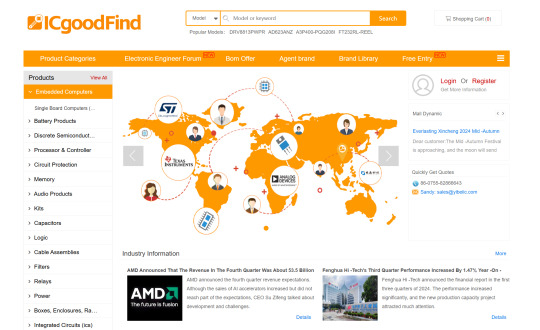
In terms of electronic component procurement, Yibeiic and ICgoodFind are your reliable choices. Yibeiic provides a rich variety of Xilinx products and other types of electronic components. Yibeiic has a professional service team and efficient logistics and distribution to ensure that you can obtain the required products in a timely manner. ICgoodFind is also committed to providing customers with high-quality electronic component procurement services. ICgoodFind has won the trust of many customers with its extensive product inventory and good customer reputation. Whether you are looking for Xilinx's FPGA, Zynq, or Versal series products, or electronic components of other brands, Yibeiic and ICgoodFind can meet your needs.
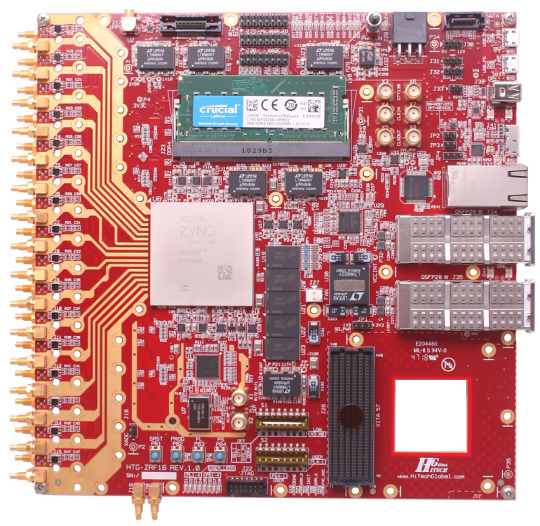
Summary by Yibeiic and ICgoodFind: Xilinx (Xilinx) as an important enterprise in the field of programmable logic devices, its products have wide applications in the electronics industry. As an electronic component supplier, Yibeiic (ICgoodFind) will continue to pay attention to industry trends and provide customers with high-quality Xilinx products and other electronic components. At the same time, we also expect Xilinx to continuously innovate and bring more surprises to the development of the electronics industry. In the process of electronic component procurement, Yibeiic and ICgoodFind will continue to provide customers with professional and efficient services as always.
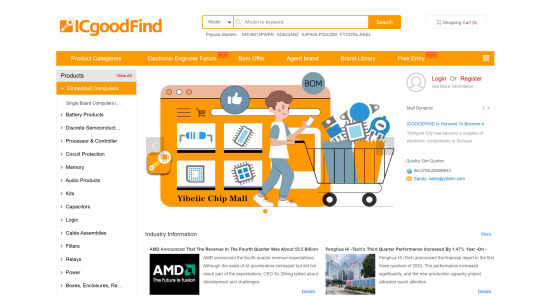
4 notes
·
View notes
Text
DSP Development Board and Kits Market: Regulatory Landscape and Policy Impact 2025-2032
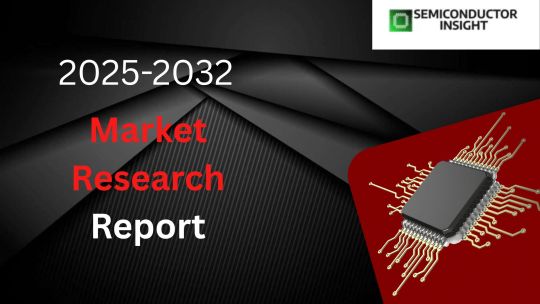
MARKET INSIGHTS
The global DSP Development Board and Kits Market size was valued at US$ 637.2 million in 2024 and is projected to reach US$ 1,020 million by 2032, at a CAGR of 7.1% during the forecast period 2025-2032.
DSP development boards and kits are specialized hardware platforms designed for digital signal processing applications. These tools provide engineers with ready-to-use development environments featuring processors optimized for high-speed mathematical computations required in audio, video, and communication systems. The product range includes single-core and multi-core configurations, supporting various signal processing algorithms and real-time applications.
The market growth is driven by increasing demand for high-performance computing in 5G infrastructure, IoT devices, and automotive systems. While North America currently leads in adoption, Asia-Pacific is witnessing accelerated growth due to expanding electronics manufacturing. Leading players like TI and Analog Devices dominate approximately 45% of the market share, supported by continuous product innovations such as energy-efficient DSP architectures and AI-integrated development kits launched in 2023-2024.
MARKET DYNAMICS
MARKET DRIVERS
Proliferation of IoT and Edge Computing Accelerates DSP Development Board Adoption
The rapid expansion of Internet of Things (IoT) applications and edge computing solutions is significantly driving demand for DSP development boards. With over 30 billion connected IoT devices projected by 2025, there's an increasing need for real-time signal processing at the edge. DSP development boards provide the necessary computational power for applications ranging from smart home devices to industrial automation systems. These boards enable developers to prototype and implement complex algorithms for noise cancellation, voice recognition, and predictive maintenance more efficiently. The growing preference for localized data processing to reduce latency and bandwidth costs further emphasizes the importance of these development tools.
Advancements in 5G Technology Fueling Market Expansion
The global rollout of 5G networks is creating substantial opportunities for DSP development board manufacturers. As 5G requires sophisticated signal processing for massive MIMO antennas and beamforming technologies, development boards with multi-core DSP capabilities are becoming essential for research and prototyping. Telecom equipment providers and chipset manufacturers are increasingly investing in advanced development kits to accelerate their 5G solution development. The demand is particularly strong in communications infrastructure, where DSP boards help optimize network performance and energy efficiency. With 5G subscriptions expected to triple by 2026, this trend shows no signs of slowing down.
Growth in Automotive Electronics Creates New Applications
The automotive industry's shift toward electric vehicles and autonomous driving systems is generating robust demand for DSP development solutions. Modern vehicles incorporate dozens of DSP-powered systems including advanced driver assistance (ADAS), in-cabin voice recognition, and battery management systems. Development boards allow automotive engineers to test and refine algorithms for real-time processing of sensor data from lidar, radar, and camera systems. The market is further boosted by increasing government mandates for vehicle safety features, with many countries requiring advanced collision avoidance systems in all new vehicles by 2025. This regulatory push ensures sustained investment in DSP development tools for automotive applications.
MARKET RESTRAINTS
Complex Design Requirements Create Barriers to Adoption
While DSP development boards offer powerful capabilities, their steep learning curve presents a significant challenge for many potential users. Programming DSP processors requires specialized knowledge of signal processing algorithms and architecture-specific optimization techniques. Many development teams lack engineers with the necessary expertise, leading to longer development cycles and increased project costs. The complexity is compounded when working with advanced features like parallel processing in multi-core boards. As a result, some organizations hesitate to adopt these solutions, opting for more general-purpose development platforms despite their performance limitations.
High Development Costs Limit Market Penetration
The substantial investment required for DSP development ecosystems serves as a market restraint, particularly for smaller companies and academic institutions. Advanced development boards with latest-generation DSP processors often carry premium price tags, with some professional kits exceeding several thousand dollars. When combined with the cost of supporting software tools, debuggers, and training, the total investment can be prohibitive. Many organizations must carefully weigh these costs against their project budgets and expected returns. While entry-level boards exist, they often lack the performance needed for cutting-edge applications, forcing users to choose between affordability and capability.
MARKET CHALLENGES
Rapid Technological Obsolescence Presents Ongoing Challenges
The DSP development board market faces constant pressure from accelerating technology cycles. As processor manufacturers introduce new architectures with improved power efficiency and computational capabilities, existing development kits quickly become outdated. This creates challenges for both vendors and users, who must decide when to upgrade their toolchains and retrain their teams. The situation is particularly acute in industries like wireless communications, where standards evolve rapidly. Development board manufacturers struggle to balance long-term support for existing platforms with the need to deliver next-generation solutions, sometimes leading to compatibility issues and frustrated customers.
Supply Chain Disruptions Impact Product Availability
Recent global supply chain challenges have significantly affected the DSP development board market. Many boards rely on specialized components from limited suppliers, making them vulnerable to shortages and extended lead times. The semiconductor industry's capacity constraints have led to allocation scenarios where development board manufacturers cannot obtain critical DSP processors in sufficient quantities. These disruptions delay product launches and complicate inventory management, sometimes forcing developers to redesign projects around available hardware. While supply conditions are gradually improving, the risk of future disruptions remains an ongoing concern for market participants.
MARKET OPPORTUNITIES
Emerging AI at the Edge Applications Open New Markets
The convergence of DSP and AI technologies creates significant growth opportunities for development board vendors. As artificial intelligence moves toward edge devices, there's increasing demand for boards that combine traditional signal processing with neural network acceleration. These hybrid solutions enable developers to implement sophisticated AI algorithms for applications like predictive maintenance, medical diagnostics, and smart surveillance. The market potential is substantial, with edge AI hardware shipments projected to grow substantially in coming years. Leading DSP manufacturers are already introducing development kits with AI-specific enhancements, including optimized libraries for machine learning workflows.
Expansion of Digital Signal Processing Education Creates Long-Term Demand
Growing emphasis on DSP education in engineering programs worldwide presents a strategic opportunity for market expansion. Universities and technical institutes are updating their curricula to include more practical signal processing applications, driving demand for affordable yet capable development boards. Board manufacturers that offer educational packages with curriculum-aligned materials and project examples can establish long-term relationships with academic institutions. These partnerships not only generate immediate sales but also cultivate future engineers familiar with specific hardware platforms. The trend toward hands-on learning in STEM education ensures sustained demand for well-designed DSP development kits in the academic sector.
DSP DEVELOPMENT BOARD AND KITS MARKET TRENDS
Growing Demand for High-Performance Signal Processing Solutions to Drive Market Growth
The DSP development board and kits market is experiencing robust expansion due to the increasing demand for high-performance digital signal processing solutions across industries. With applications ranging from real-time audio processing to telecommunications and industrial automation, these boards are becoming indispensable for modern electronics. Single-core DSP development boards currently hold a significant market share, valued at millions, yet multi-core solutions are gaining traction as processing requirements become more complex. The integration of advanced AI capabilities into DSP kits is further accelerating adoption, enabling developers to deploy sophisticated machine learning models at the edge.
Other Trends
Expansion of IoT and Edge Computing Applications
The rapid proliferation of IoT devices and edge computing solutions is creating substantial opportunities for DSP development boards. These platforms provide the necessary computational power for real-time analytics while maintaining energy efficiency, a critical requirement for battery-operated smart devices. Growth in smart city infrastructure and industrial IoT deployments specifically contributes to increased adoption, with development kits serving as the foundation for prototyping energy-conscious signal processing solutions. The Asia-Pacific region leads this trend due to concentrated manufacturing ecosystems and government-backed digital transformation initiatives.
Technological Advancements in DSP Architectures
Innovation in DSP chip designs is reshaping the development board landscape, with manufacturers pushing the boundaries of performance-per-watt metrics. Leading suppliers now incorporate heterogeneous computing architectures combining DSP cores with FPGA fabrics and AI accelerators, enabling unprecedented flexibility for developers. This technological progression supports the market's projected CAGR, as modern boards deliver up to 3x the processing efficiency of previous-generation solutions. The telecommunications sector represents a prime adoption area, where 5G infrastructure demands ultra-low latency processing that only advanced DSP kits can provide at scale.
COMPETITIVE LANDSCAPE
Key Industry Players
Market Leaders Focus on Innovation and Strategic Expansion to Maintain Dominance
The global DSP (Digital Signal Processing) development board and kits market features a dynamic competitive environment dominated by semiconductor giants and specialized electronics manufacturers. Texas Instruments (TI) emerges as the clear market leader, holding approximately 28% revenue share in 2024, owing to its comprehensive TMS320 series and strong foothold in both industrial and consumer applications.
Analog Devices follows closely with about 22% market share, driven by its SHARC and Blackfin processor lines which are particularly popular in audio processing and communications applications. Meanwhile, STMicroelectronics has been gaining traction with its STM32-based DSP solutions, capturing nearly 15% of the market through competitive pricing and strong European distribution networks.
The market shows interesting regional variations in competitive dynamics. While U.S.-based TI and Analog Devices dominate North America, Asian players like Tronlong and Yanxu Electric are making significant inroads in China's rapidly growing DSP market, which is projected to expand at 8.5% CAGR through 2032. These regional specialists compete effectively through localized support and customized solutions.
Recent years have seen intensified competition in the multi-core DSP segment, with Intel and NXP introducing heterogeneous computing platforms that combine DSP functionality with general-purpose processors. This convergence trend is reshaping the competitive landscape as traditional boundaries between microcontroller and DSP markets blur.
List of Key DSP Development Board and Kits Manufacturers:
Texas Instruments Inc. (TI) (U.S.)
Analog Devices, Inc. (U.S.)
STMicroelectronics (Switzerland)
Terasic Technologies Inc. (Canada)
Intel Corporation (U.S.)
NXP Semiconductors (Netherlands)
Realtime Technology Co., Ltd. (China)
Yanxu Electric Technology Co. (China)
Tronlong Technology Co., Ltd. (China)
Espressif Systems (China)
Segment Analysis:
By Type
Single-core DSP Development Boards Dominate Due to Cost-effectiveness and Wide Application Range
The market is segmented based on type into:
Single-core DSP Development Board
Multi-core DSP Development Board
By Application
Communications Industry Leads Due to Increasing Demand for Signal Processing Solutions
The market is segmented based on application into:
Communications Industry
Consumer Electronics
Others
By Processing Capability
High-performance DSP Kits Gain Traction for Advanced Signal Processing Applications
The market is segmented based on processing capability into:
Basic DSP Kits
Mid-range DSP Kits
High-performance DSP Kits
By End User
Research Institutions Show Significant Adoption for Prototyping and Educational Purposes
The market is segmented based on end user into:
Electronics Manufacturers
Research Institutions
System Integrators
Independent Developers
Regional Analysis: DSP Development Board and Kits Market
North America The North American DSP development board and kits market is driven by strong demand from the telecommunications and defense sectors. With major players like Texas Instruments (TI) and Analog Devices headquartered here, the region benefits from advanced R&D capabilities and early adoption of new DSP technologies. The U.S. accounts for over 60% of regional market revenue, propelled by 5G infrastructure deployment and AI/ML application development. However, high component costs and supply chain disruptions pose challenges for smaller manufacturers. The market sees growing interest in multi-core DSP boards for edge computing applications, particularly in industrial automation and automotive systems.
Europe Europe maintains a robust DSP development ecosystem focused on industrial and automotive applications. Strict EU regulations on energy efficiency and electromagnetic compatibility drive innovation in low-power DSP solutions. Germany leads regional adoption, supported by its strong industrial base and academic research institutions. The market shows increasing preference for modular development kits that simplify prototyping for IoT applications. While the region lags behind North America in high-performance DSP adoption, it excels in specialized applications like medical imaging and audio processing. Brexit-related trade barriers continue to impact UK market growth, though recovery is underway.
Asia-Pacific Asia-Pacific dominates global DSP kit production and consumption, with China accounting for nearly 40% of regional demand. Rapid 5G rollout and smart manufacturing initiatives fuel unprecedented growth, particularly for single-core DSP solutions in cost-sensitive applications. Japan and South Korea remain technology leaders, focusing on high-end DSP development kits for robotics and autonomous systems. India emerges as a significant growth market, driven by local electronics manufacturing policies and startup ecosystem development. However, intellectual property concerns and component shortage issues occasionally disrupt market stability. The region sees increasing competition between established brands and local manufacturers offering budget-friendly alternatives.
South America The South American market shows gradual but uneven growth across countries. Brazil represents the largest regional market, driven by telecommunications infrastructure upgrades and industrial automation investments. Economic instability and limited local manufacturing capability keep prices high and constrain market expansion. Educational institutions represent a growing customer segment as engineering programs incorporate DSP coursework. While multinational brands dominate the premium segment, regional distributors increasingly offer localized support and training packages to stimulate market growth amidst challenging economic conditions.
Middle East & Africa This emerging market shows promising growth potential centered around smart city initiatives in Gulf Cooperation Council (GCC) countries. The UAE and Saudi Arabia lead regional adoption, particularly for communications and energy sector applications. However, limited local technical expertise and reliance on imports create adoption barriers across most of Africa. Government initiatives to develop local electronics manufacturing capabilities are beginning to show results, though the market remains heavily dependent on international suppliers. Telecommunications infrastructure projects and security system modernization provide key growth opportunities, especially for mid-range DSP development solutions.
Report Scope
This market research report provides a comprehensive analysis of the Global DSP Development Board and Kits market, covering the forecast period 2025–2032. It offers detailed insights into market dynamics, technological advancements, competitive landscape, and key trends shaping the industry.
Key focus areas of the report include:
Market Size & Forecast: Historical data and future projections for revenue, unit shipments, and market value across major regions and segments. The market was valued at USD million in 2024 and is projected to reach USD million by 2032, growing at a CAGR of %.
Segmentation Analysis: Detailed breakdown by product type (Single-core/Multi-core DSP Development Boards), application (Communications, Consumer Electronics, Others), and end-user industry.
Regional Outlook: Insights into market performance across North America (U.S. valued at USD million in 2024), Europe, Asia-Pacific (China to reach USD million), Latin America, and Middle East & Africa.
Competitive Landscape: Profiles of leading players including TI, Analog Devices, STMicroelectronics, Intel, NXP (collectively holding % market share in 2024), covering their product portfolios and strategic developments.
Technology Trends: Assessment of DSP architecture innovations, AI/ML integration, power efficiency improvements, and development ecosystem advancements.
Market Drivers & Restraints: Evaluation of factors including 5G deployment, IoT expansion, and automotive electronics growth versus design complexity and supply chain challenges.
Stakeholder Analysis: Strategic insights for DSP manufacturers, embedded system developers, academic researchers, and investors.
The research methodology combines primary interviews with industry experts and analysis of verified market data to ensure report accuracy.
FREQUENTLY ASKED QUESTIONS:
What is the current market size of Global DSP Development Board and Kits Market?
-> DSP Development Board and Kits Market size was valued at US$ 637.2 million in 2024 and is projected to reach US$ 1,020 million by 2032, at a CAGR of 7.1% during the forecast period 2025-2032.
Which key companies dominate this market?
-> Leading players include TI, Analog Devices, STMicroelectronics, Intel, NXP, Terasic, holding approximately % combined market share in 2024.
What are the key growth drivers?
-> Primary drivers include 5G infrastructure development, increasing IoT adoption, and demand for real-time signal processing across industries.
Which region shows highest growth potential?
-> Asia-Pacific (particularly China) is the fastest-growing region, while North America currently leads in technological innovation.
What are the emerging technology trends?
-> Key trends include AI-accelerated DSPs, low-power edge computing solutions, and integrated development platforms for faster prototyping.
Related Reports:https://semiconductorblogs21.blogspot.com/2025/06/automotive-magnetic-sensor-ics-market.htmlhttps://semiconductorblogs21.blogspot.com/2025/06/ellipsometry-market-supply-chain.htmlhttps://semiconductorblogs21.blogspot.com/2025/06/online-moisture-sensor-market-end-user.htmlhttps://semiconductorblogs21.blogspot.com/2025/06/computer-screen-market-forecasting.htmlhttps://semiconductorblogs21.blogspot.com/2025/06/high-power-gate-drive-interface.htmlhttps://semiconductorblogs21.blogspot.com/2025/06/strobe-overdrive-digital-controller.htmlhttps://semiconductorblogs21.blogspot.com/2025/06/picmg-half-size-single-board-computer.htmlhttps://semiconductorblogs21.blogspot.com/2025/06/automotive-isolated-amplifier-market.htmlhttps://semiconductorblogs21.blogspot.com/2025/06/satellite-messenger-market-regional.htmlhttps://semiconductorblogs21.blogspot.com/2025/06/sic-epi-wafer-market-innovations.htmlhttps://semiconductorblogs21.blogspot.com/2025/06/heavy-duty-resistor-market-key-players.htmlhttps://semiconductorblogs21.blogspot.com/2025/06/robotic-collision-sensor-market.htmlhttps://semiconductorblogs21.blogspot.com/2025/06/gas-purity-analyzer-market.htmlhttps://semiconductorblogs21.blogspot.com/2025/06/x-ray-high-voltage-power-supply-market.htmlhttps://semiconductorblogs21.blogspot.com/2025/06/reflection-probe-market-industry-trends.html
0 notes
Text
Inside Look: What to Expect from DLF’s Flagship Project in Andheri
DLF Ltd., India’s largest real estate developer, has officially entered Mumbai’s residential market—and it’s making a statement with its flagship project in Andheri. Known for iconic developments like DLF Camellias and DLF Crest in NCR, DLF is bringing its signature blend of luxury, intelligent design, and lifestyle-driven development to the heart of Mumbai.Here’s an exclusive inside look at what to expect from this game-changing residential launch.
Project Overview: Where Design Meets Purpose
DLF’s Andheri project is more than just another premium residential tower—it’s a curated urban habitat designed to meet the needs of Mumbai’s upwardly mobile professionals, families, and global investors.
Expected Highlights (as per early market sources):
Premium 2, 3 & 4 BHK apartments
Contemporary high-rise architecture
Gated community spread across ~2–4 acres
Grand entrance lobby with concierge services
Tower orientation designed for maximum ventilation and privacy
The project reflects DLF’s dedication to form and functionality, combining spatial intelligence with lifestyle aesthetics.
Signature Features: Smart, Stylish, Sustainable
DLF is known for creating homes that are technologically advanced, aesthetically timeless, and sustainable by design. And the Andheri project is no exception.
Smart Home Integration:
Voice & app-controlled lighting and air-conditioning
Biometric digital locks and video door phones
Smart water leak detectors and energy meters
High-speed fiber-ready units with 5G compatibility
Design & Interiors:
Floor-to-ceiling windows for natural light
Premium imported tiles, modular kitchens, and designer fittings
Sound-insulated windows for noise reduction
Spacious balconies with skyline views (select units)
Sustainability at the Core
DLF has consistently prioritized environmental responsibility, and this project follows green building norms, likely targeting LEED or IGBC Gold ratings.
Sustainable Features Include:
Solar panels for common area energy
Rainwater harvesting & groundwater recharge systems
On-site organic waste composting
EV charging points and bicycle parking
Landscaped green zones and zero-discharge water systems
A New Benchmark for Mumbai Living
DLF’s Andheri flagship project is not just a home—it’s a vision of the future of urban living in Mumbai. With best-in-class features, thoughtful design, and eco-smart living, it promises to be a coveted address for years to come.
Want to know more?Stay tuned for launch dates, floor plans, and pricing—or request an exclusive invite to the pre-launch event.
#andheriwest#DLFAndheri#DLFMumbai#LuxuryLiving#AndheriRealEstate#MumbaiProperties#SmartHomes#DLFProjects#LuxuryApartmentsMumbai#AndheriHomes#MumbaiLuxuryHomes#UrbanLiving#PremiumResidences#SustainableLiving#RealEstateInvestment#SmartLiving
0 notes
Text
How to Optimize Mobile Applications for 6G Networks: The Future of Connectivity

Introduction
Moving from 4G to 5G, the generation of mobile networks offered faster speed and less latency and now there is discussion about 6G. Claiming ultra-high speed, almost negligible latency, and superior connection, 6G will revolutionize the way applications work. For the end users this implies that the applications need to evolve to properly harness on all the potential of 6G. Here’s how you can make your mobile applications ready for the future of connectivity with 6G networks.
Key Strategies for Optimizing Mobile Applications for 6G Networks
1. Understand 6G’s Capabilities

Faster Speeds: Imminent 6G apps of 1 Tbps are expected to make ways to enable apps that could handle large data transfers with ease.
Ultra-Low Latency: The expected latency range will be as low as 1 millisecond, and this makes the flow of applications to be responsive at real-time.
Massive Connectivity: 6G will offer billions of connected devices per square kilometer making it perfect for IoT enhanced services.
What to Do: Understand the following features and optimized the application behavior in the high speed data, real time data processing, and large numbers of concurrent connection.
2. Implement AI and Machine Learning

Dynamic Optimization: It can also change the app settings in accordance with the network status.
Enhanced User Experience: Users can be informed by machine learning and their response can be predicted, which makes the interaction with them more smooth and efficient.
Resource Management: Improve resource usage for devices and network and also increase the chance to perform faster and save more energy.
How to Adapt: Integrate AI-driven analytics and automated decision-making into your app’s core functionality.
3.Optimize through Edge Computing

Decentralized Processing: In 6G, edge computing will enhance the performance of the multi-access edge applications since it will process the data nearer to the end-user.
Enhanced Security: Data processing carried locally reduces vulnerability during transfer to other systems or servers.
Best Practices: Create design solutions to leave certain computations to edge servers especially when they require many resources.
4. Optimize for Minimum Energy

Energy Efficiency:6G consumer devices will require applications that are power efficient so that power to the batteries can be conserved.
Sustainability:Less power usage in our product corordinates with the noble aspiration to create green technology across the globe.
Actionable Steps: Optimize code, minimize background operations, and use energy-efficient APIs to ensure low power usage.
5. Optimize for Mixed Reality (MR) and Extended Reality (XR)

Next-Gen Experiences: s: 6G will make technology such as AR/VR and holographic communications possible.
Seamless Interactivity:An application must be capable of processing high-quality graphics of screens and must have the ability of real time interaction.
How to Prepare:
How to Prepare: Develop apps compatible with MR and XR platforms, ensuring smooth rendering and responsiveness.
6. Focus on Enhanced Security Protocols

More Devices, More Risks: The proliferation of connected devices also implies that more connected points means more possible local vulnerabilities.
Data Integrity: Apps are required to provide secure data interconnectivity in high speed devices.
Security Measures: Integrate high-level end-to-end encryption, multi-factor authentication, and AI-based threat identification into your app.
7. Integrate Cloud-Native Architecture

Scalability: 6G environment will be highly suitable for cloud-native apps as these apps will exhibit strong adaptability to handle more data and users.
Improved Reliability: Microservices and containerization of the architecture will aid in improving the performance of the apps.
Implementation Tip: Migrate to the cloud-native through application of managed services such as Kubernetes, serverless computing.
READ MORE- https://www.precisio.tech/how-to-optimize-mobile-applications-for-6g-networks-the-future-of-connectivity/
0 notes
Text
Virtualized Evolved Packet Core (vEPC) Market : Key Drivers, Significant Analysis
Global Virtualized Evolved Packet Core (VEPC) Market valued at USD X.X Billion in 2024 and is projected to reach USD X.X Billion by 2032, growing at a CAGR of X.X% from 2025 to 2032. Virtualized Evolved Packet Core (vEPC) Market Report Virtualized Evolved Packet Core (vEPC) Market: Significant Analysis The Virtualized Evolved Packet Core (vEPC) market has seen remarkable growth due to the increasing demand for scalable and cost-efficient network infrastructure. With advancements in 4G LTE, 5G technologies, and cloud computing, vEPC solutions have gained significant traction among telecom operators. The market is expected to experience substantial growth in the coming years, fueled by the growing adoption of mobile data services and the need for robust network management solutions. As more enterprises transition to cloud-based architectures and virtualized network infrastructures, the market for vEPC is projected to continue its upward trajectory. A significant increase in the number of mobile devices and data consumption is likely to further fuel the demand for these technologies. Get the full PDF sample copy of the report: (Includes full table of contents, list of tables and figures, and graphs) @ https://www.verifiedmarketresearch.com/download-sample/?rid=28066&utm_source=Glob-VMR&utm_medium=277 Virtualized Evolved Packet Core (vEPC) Market Key Drivers The major drivers behind the growth of the vEPC market include the increasing demand for mobile broadband, cost-effective network infrastructure, and the need for improved network performance. With the rise of IoT, connected devices, and the move towards 5G, telecom operators are looking for ways to enhance their core networks to support these technologies. The vEPC solution provides the flexibility to scale and optimize network traffic, making it highly attractive to telecom companies seeking efficiency and performance improvements. Moreover, the growing need for operators to reduce operational costs while increasing network agility is fueling the adoption of vEPC solutions, driving market expansion. These solutions also enable faster rollouts of new services, making them essential for meeting evolving consumer demands in a competitive environment. Virtualized Evolved Packet Core (vEPC) Market: Future Scope The future of the vEPC market appears promising, with substantial growth expected due to the expansion of 5G networks, IoT devices, and mobile broadband services. The ongoing evolution of network functions virtualization (NFV) and software-defined networking (SDN) are pivotal to this growth, as they enable more efficient network management and operations. With telecom operators transitioning to cloud-based solutions, the need for virtualized packet core solutions will become even more crucial. Additionally, as data traffic continues to rise, vEPC technologies will provide the scalability and performance necessary to manage this load. With the convergence of telecom and IT infrastructure, the vEPC market will likely see new applications and opportunities emerge, enhancing its future scope and cementing its role in the next generation of mobile networks. Asia Pacific Refractive Optical Element Market Regional Analysis The Asia Pacific region is experiencing rapid technological advancements, making it a key area for the growth of refractive optical elements. Increased investment in telecommunications and broadband infrastructure, alongside the rise of IoT and 5G technologies, is driving the demand for advanced optical components. Furthermore, the region's growing smartphone penetration and increased internet usage contribute to the need for high-performance optical elements. The strong presence of manufacturing and R&D activities in countries like China, Japan, and South Korea is expected to further boost the market for refractive optical elements in the region. These elements are crucial for improving the efficiency of telecommunication systems, enhancing both signal quality and network capacity.
The market is expected to grow steadily as demand for these components rises across various sectors, including telecommunications, automotive, and consumer electronics. Download Full PDF Sample Copy of Virtualized Evolved Packet Core (VEPC) Market Report @ https://www.verifiedmarketresearch.com/download-sample/?rid=28066&utm_source=Glob-VMR&utm_medium=277 Key Competitors in the Virtualized Evolved Packet Core (VEPC) Market These companies are renowned for their broad product offerings, sophisticated technologies, strategic efforts, and robust market presence. Each competitor's primary advantages, market share, current events, and competitive tactics—such as collaborations, mergers, acquisitions, and the introduction of new products—are highlighted in the study. Affirmed Networks Ericsson Huawei Technologies Mavenir ZTE Corporation Cisco Systems NEC Corporation Nokia Corporation Samsung Athonet Srl. Get Discount On The Purchase Of This Report @ https://www.verifiedmarketresearch.com/ask-for-discount/?rid=28066&utm_source=Glob-VMR&utm_medium=277 Virtualized Evolved Packet Core (VEPC) Market Trends Insights Virtualized Evolved Packet Core (VEPC) Market Trend Insights offers a thorough examination of the market's current and developing trends, providing insightful data-driven viewpoints to assist companies in making wise decisions. This study explores the major consumer trends, market forces, and technology developments influencing the sector. Global Virtualized Evolved Packet Core (VEPC) Market, By Component • Solutions• Services Global Virtualized Evolved Packet Core (VEPC) Market, By Application • LTE, VoLTE, and VoWiFi• IoT and M2M• MPN and MVNO• BWA Global Virtualized Evolved Packet Core (VEPC) Market, By End-User • Telecom Operators• Enterprises Virtualized Evolved Packet Core (VEPC) By Geography • North America• Europe• Asia Pacific• Latin America• Middle East and Africa For More Information or Query, Visit @ https://www.verifiedmarketresearch.com/product/virtualized-evolved-packet-core-vepc-market/ Detailed TOC of Virtualized Evolved Packet Core (VEPC) Market Research Report, 2026-2032 1. Introduction of the Virtualized Evolved Packet Core (VEPC) Market Overview of the Market Scope of Report Assumptions 2. Executive Summary 3. Research Methodology of Verified Market Reports Data Mining Validation Primary Interviews List of Data Sources 4. Virtualized Evolved Packet Core (VEPC) Market Outlook Overview Market Dynamics Drivers Restraints Opportunities Porters Five Force Model Value Chain Analysis 5. Virtualized Evolved Packet Core (VEPC) Market, By Geography North America Europe Asia Pacific Latin America Rest of the World 6. Virtualized Evolved Packet Core (VEPC) Market Competitive Landscape Overview Company Market Ranking Key Development Strategies 7. Company Profiles 8. Appendix About Us: Verified Market Research®Verified Market Research® is a leading Global Research and Consulting firm that has been providing advanced analytical research solutions, custom consulting and in-depth data analysis for 10+ years to individuals and companies alike that are looking for accurate, reliable and up to date research data and technical consulting. We offer insights into strategic and growth analyses, Data necessary to achieve corporate goals and help make critical revenue decisions.Our research studies help our clients make superior data-driven decisions, understand market forecast, capitalize on future opportunities and optimize efficiency by working as their partner to deliver accurate and valuable information. The industries we cover span over a large spectrum including Technology, Chemicals, Manufacturing, Energy, Food and Beverages, Automotive, Robotics, Packaging, Construction, Mining & Gas. Etc.Having serviced over 5000+ clients, we have provided reliable market research services to more than 100 Global Fortune 500 companies such as Amazon, Dell, IBM, Shell, Exxon Mobil, General Electric, Siemens, Microsoft, Sony and Hitachi.
We have co-consulted with some of the world's leading consulting firms like McKinsey & Company, Boston Consulting Group, Bain and Company for custom research and consulting projects for businesses worldwide. Contact us:Mr. Edwyne FernandesVerified Market Research®US: +1 (650)-781-4080UK: +44 (753)-715-0008APAC: +61 (488)-85-9400US Toll-Free: +1 (800)-782-1768Email: [email protected]:- https://www.verifiedmarketresearch.com/ Global Plate Fin Heat Exchanger Market
0 notes
Text
1 note
·
View note
Text
🖥️ My Honest Review of the GMKtec Mini PC Ryzen 6600H (Upgraded 6600U) (Spoiler: I’m Seriously Impressed)
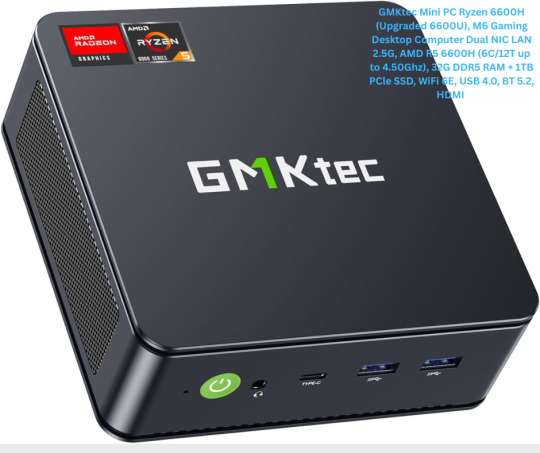
I’ll be honest—when I ordered the GMKtec M6 Mini PC, I wasn’t expecting a powerhouse. I just wanted something small, quiet, and efficient for everyday tasks, a little light gaming, and maybe some media streaming. But wow... this tiny box exceeded my expectations in more ways than I imagined.
<< Click Here Get The Product -19% Discount >>
About this item
【Best Value Ryzen Mini PC】GMKtec Nucbox M6 Series is equipped with the powerful AMD Ryzen 5 6600H processor, 6 Cores/12 Threads, Boost up to 4.50GHz, Based on the ZEN 3+ architecture, this small but powerful mini pc delivers satisfying results in productivity, office work, and gaming. It uses the new upgraded iGPU AMD Radeon 660M which is an upgrade over the previous AMD RX Vega 8. With a TDP Boost of 45W, the Ryzen 6600H CPU delivers a 30% Performance increase over previous AMD Ryzen 7 5700U, Ryzen 5 5600U 5560U 5500U.
【32GB DDR5 RAM & 1TB PCIe SSD】Installed with DDR5 32GB RAM Dual Channel (2x16GB), the Nucbox M6 mini pc support expansion to 64GB RAM. Featured with 1TB M.2 2280 PCIe 3.0 SSD, support dual slot expansion to PCIe 4.0 4TB SSD. (Upgrades not included)
AMD Ryzen 5 6600H vs. Ryzen 5 6600U ✔ Performance - 6600H: Higher base/turbo clocks (3.3GHz / 4.5GHz) for sustained performance in gaming/creative workloads. 6600U - Optimized for light performance (2.9GHz / 4.5GHz), better for thin-and-light laptops. ✔ TDP & Power: - 6600H: 45W TDP (designed for performance mini PCs). 6600U: 15-28W TDP (Low Power Light Tasks). ✔ Use Case: 6600H: Ideal for gaming, video editing, and high-demand apps.
【DUAL NIC LAN 2.5G RJ45】Fast Network Speeds: Enjoy up to 2500Mbps data transmission speed without worrying about lagging. Ideal for working, gaming, and surfing the internet. Great for Untangle, Pfsense or as a server office PC.
【Mini Desktop Computer with 4K Triple Screen Display】Nucbox M6 integrates AMD Radeon 660M 6 Cores 1900 MHz GPU to deliver powerful graphics processing power to easily handle the demands of complex design software, 4K@60Hz UHD video editing, and playback, or mid-range gaming. And it can connect to 3 display screens simultaneously.
【Fast Internet WiFi 6E + BT5.2 Connection】GMKtec Mini PC Ryzen 6600H with WiFi-6E Wireless, have 2.5G/5G/6G triple band, more faster and lower latency. Bluetooth 5.2 allowing you more quickly to connect other wireless devices (headset, mouse, keyboard, etc.) Interface features 2*USB3.2 ports, 2*USB2.0 ports, 1*HDMI 2.0 port(4K@60Hz), 1*USB 4.0 port(PD/DP/DATA), 1*DP Port, 1*Audio 3.5mm (HP&MIC), 1*DC Power Port.
【GMKtec Warranty】 GMKtec offers a 1-year limited warranty for each mini PC, starting from the date of the purchase. All defects due to design and workmanship are covered. With a professional after sales team always ready to attend to your needs, you can simply relax and enjoy your mini PC.
Product information
Memory
Cache Memory Installed Size 16 MB
Memory Storage Capacity 32 GB
Memory Slots Available 2
RAM Memory Installed 32 GB
RAM Memory Technology DDR5
Ram Memory Maximum Size 64 GB
Memory Speed 4800 MT/s
RAM Type DDR5 RAM
Memory Clock Speed 4.5 GHz
Additional details
Operating System Windows 11 Pro
Specific Uses For Product Everyday Use, Gaming, Business
Personal Computer Design Type Mini PC
Color Space Black
Additional Features Gaming PC, Home Theater, Digital Signage, Video Conference, Business, Video & Photo Editing, Education, Everyday Use, Multimedia
Hard Disk Description PCIe 3.0/4.0 M.2 2280 SSD Dual Slot Max. 4TB
Hardware Interface USB Type C, HDMI, 3.5mm Audio, Bluetooth 5, 802.11 ac/b/g/n, USB 3.2 Gen 2, PCIE x 16
Power Consumption 45 Watts
Item Dimensions 5 x 2 x 5 inches
Video Output HDMI, Type-C, DisplayPort
Video Output Interface DisplayPort, HDMI
Hard Disk Interface PCIE x 16
Style Name Small PC
Cooling Method Air
Power Plug Type Type B - 3 pin (North American)
Total Expansion Slots Quantity 2
Item details
Brand GMKtec
Model Number M6
Model Name M6
Built-In Media User Manual, GMKtec Nucbox M6 AMD Ryzen 5 6600H Mini PC Computer, Power Supply & Cable, VESA Mount and Screws, HDMI Cable
Processor Brand AMD
Model Year 2024
CPU Model Number AMD Ryzen 5 6600H
Video Processor AMD
Customer Reviews 4.4 4.4 out of 5 stars (461) 4.4 out of 5 stars
ASIN B0D2X1G4K8
Item Height 5 inches
Manufacturer Shenzhenshi Jimokekejiyouxiangongsi
Warranty Description 1 Year Warranty
<< Click Here Get The Product -19% Discount >>
Graphics
Graphics Description Integrated
Graphics Coprocessor AMD Radeon 660M 1900MHz
Graphics Card Ram 32 GB
Graphics Ram Type DRAM
Graphics Card Interface Integrated
Processor
Processor Series Ryzen 5
Processor Speed 4.5 GHz
Processor Socket FP7 BGA 25×35mm
Processor Count 6
Display
Screen Size 75 Inches
Display Resolution Maximum 3840 x 2160 pixels
Display Type LED
Aspect Ratio 16:9
Resolution 4096 × 2160
Native Resolution 4096 x 2304
Connectivity
Wireless Network Technology Wi-Fi
Connectivity Technology USB, Ethernet, LAN, HDMI
Wireless Compability 5.8 GHz Radio Frequency, 5 GHz Radio Frequency, Bluetooth, 802.11ax, 2.4 GHz Radio Frequency
Wireless Technology Bluetooth, Wi-Fi
Ports
Total USb Ports 5
Total Number of HDMI Ports 1
Number of Component Outputs 3
Input Devices
Human-Interface Input Touchscreen, Mouse, Keyboard, Buttons
Keyboard Layout QWERTY
Warranty & Support
Amazon.com Return Policy:You may return any new computer purchased from Amazon.com that is "dead on arrival," arrives in damaged condition, or is still in unopened boxes, for a full refund within 30 days of purchase. Amazon.com reserves the right to test "dead on arrival" returns and impose a customer fee equal to 15 percent of the product sales price if the customer misrepresents the condition of the product. Any returned computer that is damaged through customer misuse, is missing parts, or is in unsellable condition due to customer tampering will result in the customer being charged a higher restocking fee based on the condition of the product. Amazon.com will not accept returns of any desktop or notebook computer more than 30 days after you receive the shipment. New, used, and refurbished products purchased from Marketplace vendors are subject to the returns policy of the individual vendor. Product Warranty: For warranty information about this product, please click here
👍 Pros & 👎 Cons
✅ What I Loved:
Blazing fast performance for work and casual gaming
Tiny footprint with VESA mount included
Tons of ports, including future-proof USB 4.0
Upgradable RAM and dual SSD slots
Solid build and modern design
⚠️ What Could Be Better:
Fan gets loud during heavy tasks
Integrated graphics can’t handle demanding AAA games
Minor driver hiccups (easily fixed, though)
💬 Final Verdict: Is the GMKtec M6 Worth It?
Absolutely. For under $500 (-19% $359.97) (and often less with discount codes like GMKTECSAVE), the GMKtec M6 gives you desktop-class power in a box the size of a sandwich. Whether you’re a student, remote worker, media streamer, or casual gamer—this mini PC is a fantastic blend of performance, portability, and price.
I’d easily give it 4.5 out of 5 stars. If it had quieter fans and a beefier GPU, it’d be perfect. But as it stands, it’s probably the best mini PC I’ve ever owned.
<< Click Here Get The Product -19% Discount >>
#ryzen 6600h gaming#ryzen 5 6600h#gmktec mini pc ryzen 6600h#ryzen 6600h mini computer#ryzen 5 6600h gaming test#amd ryzen 5 6600h gaming test#amd ryzen 5 6600h#ryzen#ryzen 6600h mini pc#6600h#ryzen mini pc#ryzen 6600h#ryzen 6600h mini desktop#m6 ryzen 5 6600h mini#cheap ryzen mini pc#amd ryzen 5 6600h mini pc#m6 amd ryzen 5 6600h mini#ryzen 5 6600h gaming#ryzen 6600h desktop#m6 ryzen 5 6600h#m6 amd ryzen 5 6600h
0 notes
Text
FinFET Technology Market Size Elevating Semiconductor Performance to New Heights
The FinFET Technology Market Size marks a significant milestone in semiconductor fabrication, offering higher performance, lower power consumption, and enhanced scalability compared to traditional planar transistors. With devices shrinking to sub-10 nm nodes, the introduction of FinFETs—transistors featuring a 3D fin structure—has become pivotal for sustaining Moore's Law. These advancements are redefining computing, cellular, automotive, and edge AI applications.
According to Market Size Research Future, global FinFET technology is projected to grow significantly by 2030, driven by increasing demand for high-performance ASICs, 5G infrastructure, and AI accelerators. The shift toward smaller process nodes and energy-efficient designs continues to fuel investment across foundries and OEMs.
Overview of FinFET Technology
FinFET (Fin Field-Effect Transistor) represents a 3D transistor family designed for low leakage and efficient switching at nanometer-scale nodes. By wrapping a thin silicon fin around the gate, FinFETs improve electrostatic control and reduce short-channel effects—critical for modern chip performance.
You'll find FinFETs at the core of system-on-chip (SoC) architectures powering smartphones, high-speed computing, networking hardware, and high-throughput mobile devices. Applications span from Qualcomm's Snapdragon processors to Nvidia’s Ampere GPUs, as both industries prioritize performance-per-watt and thermal limits.
Key Growth Drivers
Advanced Process Node Demand The continuous scaling to 7 nm, 5 nm, and beyond requires FinFETs to maintain channel control, reduce leakage, and boost transistor density.
5G and Networking Infrastructure Infrastructure equipment—like RF front-end modules and baseband SoCs—rely on FinFETs to support high frequencies and low power under elevated thermal loads.
AI Accelerators & Edge Compute FinFETs offer the transistor scaling needed to maintain performance gains in data centers and energy-efficient edge AI processors.
Automotive and Industrial Electronics With automotive electronics requiring high reliability and low power, FinFET integration in ADAS, radar, and EV power components is rising sharply.
Market Size Segmentation
By Node Range: 14 nm & below / 10 nm–7 nm / 5 nm and below
By Transistor Type: High Performance (HP), Low Leakage (LO), High Voltage (HV)
By End‑User: Smartphones, Data Centers, 5G Infrastructure, Automotive, Defense & Aerospace, Consumer Electronics, Industrial IoT
Regional Dynamics
Asia-Pacific leads due to TSMC, Samsung, and Chinese foundries aggressively ramping advanced nodes.
North America excels in design leadership through companies like Intel and Nvidia, including advanced integration of FinFETs in HPC and AI chips.
Europe focuses on automotive-grade FinFETs, with contributions from Infineon and STMicroelectronics in the energy and mobility sectors.
Key Industry Players
TSMC – Dominant pure-play foundry with leadership in high-volume 5 nm and 3 nm FinFET production.
Samsung Foundry – Offers advanced FinFET nodes and innovative packaging through SoC integration.
Intel – Transitioning to FinFET and gate-all-around architectures in its IDM 2.0 strategy.
GlobalFoundries, UMC, and SMIC – Deliver mature FinFET nodes for automotive, industrial, and mid-range SoCs.
Cadence, Synopsys, Mentor (Siemens) – Provide EDA tools for FinFET-based design, modeling, and verification.
ARM, Qualcomm, Broadcom, Nvidia – Utilize FinFET technologies in their SoC portfolio.
Emerging Trends
Gate-All-Around (GAA) Evolution – Next-gen FETs transition from FinFET towards GAA structures (e.g., nanosheet), extending device scaling.
2.5D/3D Chiplets & Heterogeneous Packaging – Integrating FinFET chips via advanced interconnects for modular, multi-die systems.
Beyond FinFET – Research into nanosheet, nanowire transistors, and monolithic 3D stacking is progressing rapidly to sustain scaling.
AI/ML for Process Control – real-time analytics optimize yields and lower defects in FinFET production.
Challenges Ahead
Rising manufacturing costs at sub-5 nm nodes, requiring ROI over large orders.
Thermal management and interconnect resistance, demanding advanced packaging materials and cooling solutions.
Design complexity, requiring sophisticated EDA tools and IP for timing and variability control.
Geopolitical constraints and supply chain uncertainties necessitating diversification and capacity investment.
Future Outlook
FinFET technology will remain dominant through the 2025–2028 horizon, enabling cutting-edge applications in AI, 5G, and edge computing. The transition to GAA and further miniaturization promises continued performance gains. With increasing investment in specialized FinFET fabs and design platforms, this evolution supports the growing demands of intelligent, connected devices.
Related Insights
Explore adjacent technology fields shaping chip innovation:
Radar Lidar Technology for Railway Applications Market Size
Quadruped Robot Market Size
Oxygen Gas Sensor Market Size
E‑Tailing Solution Market Size
Consumer Electronics Mini LED Market Size
D‑Shaped Connector Market Size
Debris Extraction Tool Market Size
Diaper Attachment Sensor Market Size
Digital Holographic Display Market Size
Digital Photo Printing Market Size
Discrete Graphics Microprocessor and GPU Market Size
Diving Compressor Market Size
Explosion Proof Mobile Communication Device Market Size
0 notes
Text
IPLOOK at MWC Shanghai 2025 | Focusing on the Future of Communications
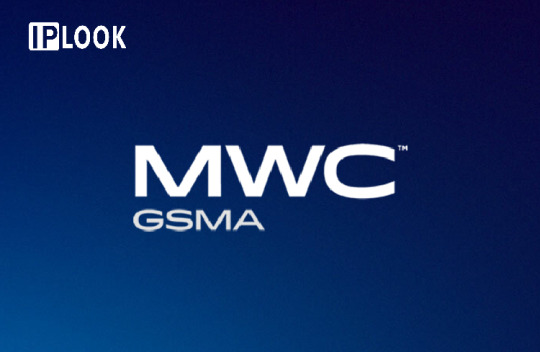
In June 2025, MWC Shanghai was held as scheduled, bringing together global leaders and experts from the telecommunications industry to explore cutting-edge trends such as 5G-A, 6G, artificial intelligence, and the Internet of Everything. As a dedicated provider of EPC and 5GC core network solutions, IPLOOK actively participated in this prestigious event, engaging in face-to-face, in-depth communications with both new and long-standing customers and partners from around the world.
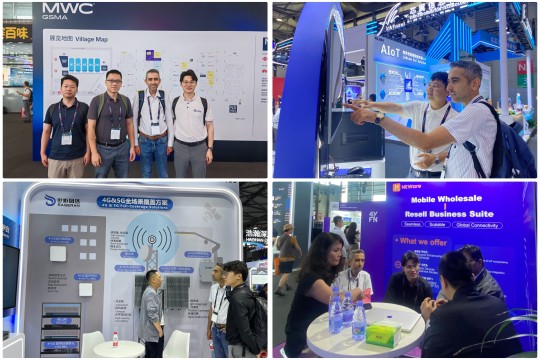
During the three-day exhibition, the IPLOOK team visited major exhibition zones and frequently interacted with leading enterprises, operators, and representatives from vertical industries. Through multiple professional conferences, forums, and one-on-one meetings, we not only gained deep insights into the latest industry developments but also shared part of IPLOOK's technological innovations and global deployment achievements in 5G core networks, private networks, and edge computing.
Partial Achievements: IPLOOK has advanced flexible deployment models for 5G core networks, with its cloud-native 5GC platform achieving commercial scale supporting millions of users. Our private network solutions cover industries such as energy, rail transportation, and intelligent manufacturing, integrating cloud architectures to ensure network security and efficient operations. Our edge computing solutions support low-latency applications, incorporating AI-driven intelligent analytics to enhance network performance and operational efficiency, etc. Partial Industry Insights: The global telecommunications industry is accelerating the development of 5G-A, 6G, and AI-enabled networks, driving applications in higher frequency bands, greater bandwidth, and more intelligent architectures. Operators and vendors are actively expanding 5G industry application scenarios, pushing network evolution into broader fields, etc. IPLOOK keeps pace with these trends, continuously innovating to help customers build the intelligent connected networks of the future.
These exchanges further strengthened our trust and cooperation with existing customers and partners while initiating several promising collaboration projects, laying a solid foundation for IPLOOK's future global business expansion. Looking ahead, IPLOOK remains committed to delivering flexible and efficient core network solutions to clients worldwide, collaboratively building a smarter, more connected future.
We look forward to meeting you at the next destination!
0 notes
Text
ASX All Ordinaries Today: Telstra Group (ASX:TLS) Drives Telecom Expansion
Highlights:
Telstra Group maintains robust operations across fixed, mobile, and enterprise telecommunications.
The company continues to scale its digital infrastructure strategy through fibre and 5G services.
Telstra is listed on both the ASX 200 and the All Ordinaries index, anchoring its role in Australian telecom.
Telecom Sector Outlook with ASX All Ordinaries Today Index Telstra Group (ASX:TLS) operates in the telecommunications sector, offering fixed broadband, mobile networks, cloud solutions, and enterprise services. As a major component of both the ASX 200 and the All Ordinaries index, the company is among the key drivers of Australia’s telecom infrastructure. The All Ordinaries reflects the largest listed companies on the Australian Securities Exchange by market capitalisation, capturing broad exposure across industrial, energy, healthcare, and telecommunications segments.
Telstra's role in the telecom space is reinforced by extensive infrastructure assets, including subsea cables, data centres, and national mobile networks. These operations are supported by long-standing wholesale and consumer segments, delivering digital connectivity and core telecom products across metropolitan and regional areas.
Infrastructure Leadership and 5G Expansion Telstra continues to scale its 5G network, aiming to extend national mobile coverage and accelerate mobile data speeds. This includes investment in mobile towers, regional network upgrades, and urban densification initiatives. Through its growing infrastructure portfolio, the company supports both personal and enterprise mobile demand.
The company’s national broadband services also operate across fixed-line and fibre networks, integrating high-speed capacity for residential and commercial usage. Telstra’s network investments are complemented by wholesale agreements and industry partnerships, enhancing national coverage and improving capacity in high-density zones.
Enterprise Services and Digital Transformation Telstra’s enterprise business caters to government, business, and corporate clients with tailored solutions in cloud, networking, security, and unified communications. These services integrate with global operations to deliver managed platforms, data centres, and secure connectivity.
Digital transformation efforts remain central to Telstra’s strategy, featuring automation, digitised customer service, and streamlined internal systems. The company’s platform approach involves consolidating legacy systems and deploying cloud-native software to modernise service delivery. Enterprise products are delivered through scalable service models, facilitating data and voice communication across industries.
Fibre Network Strategy and Wholesale Segments The company’s wholesale infrastructure division provides connectivity through fibre-based services, catering to other telecom operators, internet providers, and enterprise customers. Telstra’s fibre network enables backhaul and core traffic distribution across national and international systems.
High-capacity cables support service continuity for bandwidth-heavy applications across business sectors and government institutions. Wholesale services also include mobile virtual network access and leased spectrum solutions. These systems are supported by resilient core network architecture and global transmission assets.
Index Performance and Sector Standing Telstra Group is included in multiple benchmark indexes such as the ASX 200 and All Ordinaries. These indexes reflect overall market performance, capturing a range of sectors and company sizes. Inclusion in these indexes signals the company’s relative scale within Australia’s listed market environment.
The All Ordinaries index, which encompasses the largest entities by market size, includes Telstra due to its extended operations and national significance. Its dual listing in key Australian indexes positions the company as a telecom representative for index-aligned observations and performance tracking across sectors.
ASX dividend yield scan continues to include Telstra among telecommunications providers maintaining consistent performance across income-focused metrics.
0 notes
Text
Japan Data Center Networking Market Size, Drivers & Challenges To Watch 2032
Japan Data Center Networking Market Overview Japan’s data center networking market was valued at roughly USD 2.3 billion in 2024 and is projected to expand at a compound annual growth rate (CAGR) of about 8.6 % through 2030, surpassing USD 3.8 billion by 2030 and approaching USD 5 billion by 2035. Surging hyperscale cloud investment, 5G-driven edge build-outs, and intensifying demand for low-latency links to support AI/ML workloads are primary growth levers. Government programs such as the Digital Garden City Nation initiative, alongside corporate sustainability agendas, spur upgrades from 10/40 GbE to 100/400 GbE and beyond, driving sizable refresh cycles and swelling total addressable market (TAM). Japan Data Center Networking Market Dynamics Drivers — Rapid expansion of hyperscale and enterprise colocation footprints, strict data-sovereignty rules encouraging domestic hosting, and migration to software-defined networking (SDN) and network function virtualization (NFV) for operational agility.Restraints — Semiconductor supply fluctuations, yen depreciation inflating import costs for switching silicon, and a constrained talent pool of advanced network architects.Opportunities — Edge data center proliferation along smart-city corridors, adoption of open-switch platforms running SONiC, and rising appetite for green networking solutions to meet carbon-neutral pledges. Regulatory support for renewable energy pairing with data facilities further enhances the investment landscape. Download Full PDF Sample Copy of Japan Data Center Networking Market Report @ https://www.verifiedmarketresearch.com/download-sample?rid=514804&utm_source=PR-News&utm_medium=385 Japan Data Center Networking Market Trends and Innovations Disaggregated switch architectures, purpose-built AI fabrics such as NVIDIA Spectrum-X, and 800 GbE testbeds are gaining traction. Vendors are accelerating R&D in time-sensitive Ethernet and RDMA-over-Converged-Ethernet (RoCE) to satisfy exascale GPU cluster needs. Collaboration among Japanese telcos, cloud service providers, and equipment makers is spawning liquid-cooled top-of-rack (ToR) switches aligned with stringent PUE targets. Open-source SONiC-based network operating systems are moving from PoC to production, boosting vendor neutrality, price transparency, and accelerated feature rollouts. Japan Data Center Networking Market Challenges and Solutions Persistent supply-chain uncertainty continues to stretch lead times for optical transceivers and advanced ASICs, jeopardizing rollout schedules. Operators are mitigating risk by dual-sourcing critical components, adopting modular chassis designs, and locking in forward-buy contracts. Escalating real-estate and electricity costs in Tokyo’s urban core are pushing developers toward edge-centric architectures and retrofitting brownfield industrial sites in regional hubs. Cyber-security compliance under the Act on the Protection of Critical Infrastructure adds complexity; zero-trust frameworks coupled with intent-based automation platforms are emerging as practical countermeasures. Japan Data Center Networking Market Future Outlook Over the coming decade the market will pivot from bandwidth-centric to latency-optimized architectures, catalyzed by generative AI, digital-twin simulations, and nationwide IoT deployments tied to the Osaka-Kansai Expo 2025. Analysts expect ports of 100 GbE and above to deliver 85 % of aggregate throughput by 2030, while SDN-capable devices achieve >70 % penetration by 2032. Sustainability will remain a decisive purchase criterion, steering investment toward silicon photonics, liquid-cooled routers, and AI-assisted energy-aware traffic engineering. Consequently, the Japan data center networking market is poised for resilient, innovation-led growth, underpinned by policy alignment, robust digital-economy expansion, and ongoing hyperscale capital expenditure. Japan Data Center Networking Market Competitive Landscape The Japan Data Center Networking
Market competitive landscape is characterized by intense rivalry among key players striving to gain market share through innovation, strategic partnerships, and expansion initiatives. Companies in this market vary from established global leaders to emerging regional firms, all competing on parameters such as product quality, pricing, technology, and customer service. Continuous investments in research and development, along with a focus on sustainability and digital transformation, are common strategies. Mergers and acquisitions further intensify the competition, allowing companies to broaden their portfolios and geographic presence. Market dynamics are influenced by evolving consumer preferences, regulatory frameworks, and technological advancements. Overall, the competitive environment fosters innovation and drives continuous improvement across the Japan Data Center Networking Market ecosystem. Get Discount On The Purchase Of This Report @ https://www.verifiedmarketresearch.com/ask-for-discount?rid=514804&utm_source=PR-News&utm_medium=385 Japan Data Center Networking Market Segmentation Analysis The Japan Data Center Networking Market segmentation analysis categorizes the market based on key parameters such as product type, application, end-user, and region. This approach helps identify specific consumer needs, preferences, and purchasing behavior across different segments. By analyzing each segment, companies can tailor their strategies to target high-growth areas, optimize resource allocation, and improve customer engagement. Product-based segmentation highlights variations in offerings, while application and end-user segmentation reveal usage patterns across industries or demographics. Regional segmentation uncovers geographical trends and market potential in emerging and developed areas. This comprehensive analysis enables stakeholders to make informed decisions, enhance competitive positioning, and capture new opportunities. Ultimately, segmentation serves as a critical tool for driving focused marketing, innovation, and strategic growth within the Japan Data Center Networking Market. Japan Data Center Networking Market, By Type Japan Data Center Networking Market, By Application Japan Data Center Networking Market, By End User Japan Data Center Networking Market, By Geography • North America• Europe• Asia Pacific• Latin America• Middle East and Africa For More Information or Query, Visit @ https://www.verifiedmarketresearch.com/product/japan-data-center-networking-market/ About Us: Verified Market Research Verified Market Research is a leading Global Research and Consulting firm servicing over 5000+ global clients. We provide advanced analytical research solutions while offering information-enriched research studies. We also offer insights into strategic and growth analyses and data necessary to achieve corporate goals and critical revenue decisions. Our 250 Analysts and SMEs offer a high level of expertise in data collection and governance using industrial techniques to collect and analyze data on more than 25,000 high-impact and niche markets. Our analysts are trained to combine modern data collection techniques, superior research methodology, expertise, and years of collective experience to produce informative and accurate research. Contact us: Mr. Edwyne Fernandes US: +1 (650)-781-4080 US Toll-Free: +1 (800)-782-1768 Website: https://www.verifiedmarketresearch.com/ Top Trending Reports https://www.verifiedmarketresearch.com/ko/product/monolithic-elastic-conveyor-belts-market/ https://www.verifiedmarketresearch.com/ko/product/womens-lingerie-market/ https://www.verifiedmarketresearch.com/ko/product/us-cross-border-payment-market/ https://www.verifiedmarketresearch.com/ko/product/contract-lifecycle-management-software-market/ https://www.verifiedmarketresearch.com/ko/product/commercial-telematics-market/
0 notes